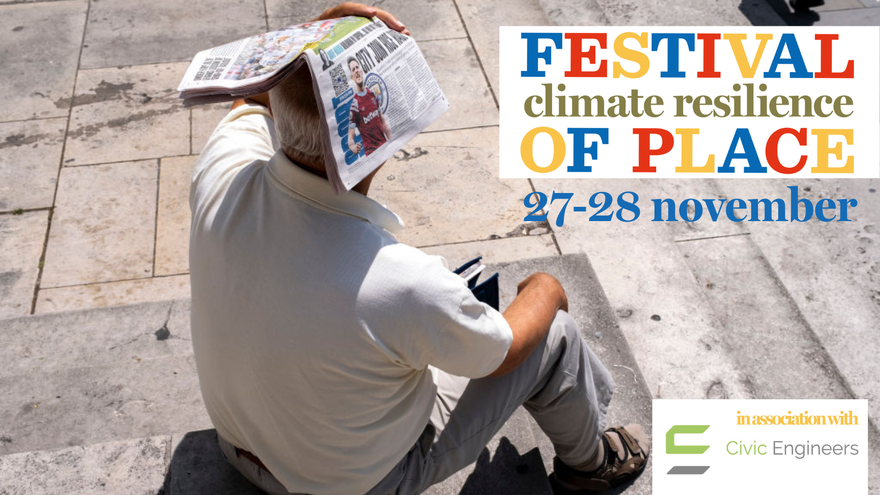Get updates from The Developer straight to your inbox Yes, please!
Walkable and green neighbourhoods reduce risk of broken bones
Study of more than 20,000 participants finds that green and walking-friendly neighbourhoods encourage physical activity and decrease risk of fracture in people over the age of 40. Christine Murray reports

Groundbreaking research into walkable and green neighbourhoods has found that walkability and greenness reduce the risk of broken bones. "Long-term exposure to higher levels of walkability and greenness were both associated with decreased risk of incident fracture. Moreover, we observed that the benefits of greenness on fracture increased as the level of walkability increased," the paper concludes, published by the Journal of the American Medical Association.
The study uses the medical records and residential addresses of 23,940 participants to record the incidence of broken bones, using satellite imagery and Walk Scores to assess greenness and walkability. The use of data avoids "recall bias" and the subjective feelings of participants.
The reduced risk of fracture is thought to be triggered by an increase in physical activity which improves bone strength. Other studies have shown that both walkable places and green neighbourhoods independently increase physical activity, but this is the first known study to link greenness and walkability to injury prevention. The authors also posit that decreased air pollution in green spaces, increased exposure to sunshine and stress-reduction also may also explain the findings.
"Our findings are of great value for urban planners in designing neighborhoods with adequate greenness and walking-friendly amenities to encourage physical activity and ultimately decrease risk of fracture"
The study followed 23,940 participants over the age of 40 in the Yinzhou District of Ningbo. Information on age, sex, BMI, education, occupation, household income, medical history, osteoporosis, diabetes and concentrations of air pollution was collected.
Previous studies have shown a link between walkable neighbourhoods and increased physical activity, and physical activity is known to decrease the risk of fracture. In addition, neighbourhood greenness has been associated with mitigating air pollution, and poorer air quality is associated with diminished bone density and great susceptibility to fracture.
The authors are Dr Kun Chen, Department of Public Health, Second Affiliated Hospital and Dr Jianbing Wang, Department of Public Health, and Department of National Clinical Research Center for Child Health, The Children’s Hospital, Zhejiang University School of Medicine.
The role of the built environment in supporting health is an increasing area of study
In their conclusion, the authors expect their findings will be "of great value for urban planners in designing neighbourhoods with adequate greenness and walking-friendly amenities to encourage physical activity and ultimately decrease risk of fracture."
The role of the built environment in supporting health is an increasing area of study. The authors write that "fracture has been an important global health issue and has caused a considerable number of disabilities and mortalities worldwide... With the progress of urbanisation, the share of the global urban population will increase from 56% in 2021 to 68% by 2050.
The report cites figures that show incidence of fracture in China is expected to rise, with costs projected to increase from US$9.45 billion to US$25.43 billion. "Therefore, the importance of exploring the role of the built environment on human health has been stressed."
The NHS has also forecast a rise in the expenditure on fragility fractures, from £4.6 billion every year rising to £6 billion by 2030 due to an ageing population.
Greenness is believed to confer benefits such as providing opportunities for physical activity, mitigating hazards of air pollution, increasing social contact and alleviating psychophysiological stress
"One such indicator is neighbourhood walkability, reflecting the extent to which the neighbourhood area is friendly for pedestrians. Several studies have shown that people residing in more walkable neighbourhoods may experience more psychological well-being and social connection and engage in more minutes of moderate to vigorous physical activity.
"Another environmental factor that may impact fracture is greenness, which is believed to confer benefits such as providing opportunities for physical activity, mitigating hazards of air pollution, increasing social contact and alleviating psychophysiological stress. Studies have demonstrated that increased physical activity is associated with a decreased risk of fracture. Long-term exposure to air pollution is inversely associated with bone health, such as diminished bone density, increased risk of osteoporosis and greater susceptibility to fracture."
"In light of these findings, it is crucial to investigate the association between greenness and incident fracture and to prioritise efforts to create healthier environments for residents."
Read the full study, Exposure to Neighborhood Walkability and Residential Greenness and Incident Fracture, published on 28 September, 2023, on JAMA Network
If you love what we do, support us
Ask your organisation to become a member, buy tickets to our events or support us on Patreon
Sign up to our newsletter
Get updates from The Developer straight to your inbox
Thanks to our organisation members
Become a member
© Festival of Place - Tweak Ltd., 124 City Road, London, EC1V 2NX. Tel: 020 3326 7238

